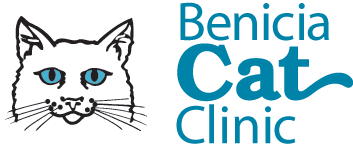Educational Articles
-
Cats can have misalignment of the teeth much like people. In people, orthodontic care can be used to perfect a pleasing smile or create a functional bite. In cats, the goal is to make the mouth functional and pain free. Often, this involves moving, reducing the height of teeth, or extracting teeth.
-
Wheat gluten + monosodium glutamate (brand name For-Bid) is a food additive commonly used to deter coprophagy (eating stool). Give as directed by your veterinarian. Side effects have not been reported. Do not use concurrently with steroids. If a negative reaction occurs, please call your veterinary clinic.
-
Cat grass can be one of many cereal grains such as oat, wheat, barley, alfalfa, or rye. The grass is planted and cultivated indoors and presented to the cat as a supplement to the existing diet. Eating grass targets a cat’s natural instinct to forage and provides entertainment as well as nutritional and digestive value.
-
Whipworms are intestinal parasites measuring about 1/4 inch (6 mm) in length. They live in the intestinal tract of cats where they can cause severe irritation. Whipworm infection results in watery diarrhea, weight loss, and general debilitation. Fecal testing will not detect every infection. Whipworm infection in cats is rare in North America but cases appear to be rising.
-
White willow bark is given by mouth and is used over the counter to treat pain and inflammation in cats and dogs. Give as directed by your veterinarian. Side effects may include stomach upset and skin rash. Do not use in pets that are allergic to it or aspirin, or in pets that are pregnant, nursing, or very young. It should be used cautiously in pets with certain medical conditions. If a negative reaction occurs, please call your veterinary office.
-
Cats will always lick, but it is sometimes embarrassing when they lick their private parts. Licking after eliminating is normal; however, if your cat licks more frequently, or you notice other signs such as discharge; swollen or red penis, vulva, or anus; pustules; discoloration of the skin; or if your cat strains to urinate, see your veterinarian for help. Appropriate medical therapy can reduce your cat's discomfort.
-
A cat’s ability to smell is far more advanced than ours. The Jacobson’s organ, located inside the nasal cavity, opens into the roof of the mouth behind the upper incisors and serves as a secondary olfactory system designed for chemical communication related to mating. Cats use their keen sense of smell, along with a visual assessment, to provide vital information about a new feline acquaintance. The way cats sniff rear ends can establish which of two cats is dominant and set the foundation of their relationship.
-
Turning around before bedtime has its origin mostly in evolutionary history where cat ancestors were practicing these habits for health or protection. These innate habits remain in their genetic code to this day but if your cat is seeming to be doing it excessively, it could be a sign of underlying medical problems, such as arthritis of neurological disorders. Contact your veterinarian if your cat appears to have difficulty settling down.
-
But whiskers are more than just facial enhancements. They serve an important function. Whiskers are finely tuned sensory equipment that guide a cat through daily functions. These specialized hairs aid vision and help a cat navigate the environment, providing additional sensory input, much like antennae on insects.
-
Running a veterinary clinic has a lot of overhead and behind the scenes cost that many pet owners aren't aware of. Human healthcare is far more expensive and less efficient than you realize. Plan ahead and take preventive steps to help reduce treating costly problems.

